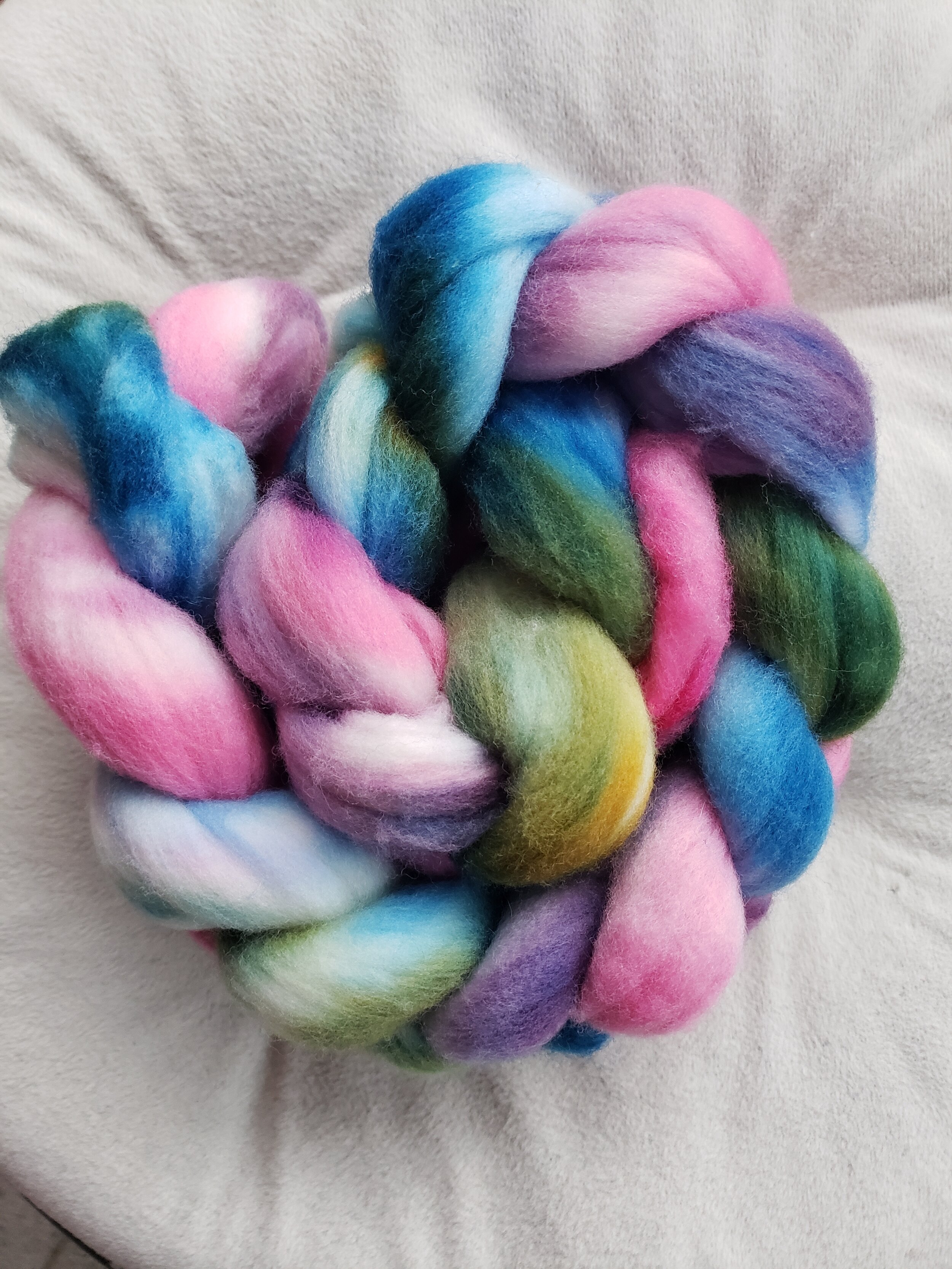The Life of a Spinning Fiber Braid Featuring January's Spinning Fiber Braid of the Month
You can get your own in our CHY Braid of the month club or the Fiber Artist Bundle
This Blog is guest written by one of our Staff Jesse Holcombe. She is not only a talented knitter and pattern designer but she also is one of our dye team members. She actually dyed this braid for January herself. This braid was on a Targhee Sheep wool and is from a small USA farm like all of our fiber braids. Please follow her and her very popular instagram account @thedancingpines
You've got mail! Soft, squishy, fiber goodness. It's the Braid of the Month you have been waiting for! But where does all this goodness start?
It starts with a sheep. You know the type, the adorable ears wagging, the sweet bleats, those luscious locks. I may have said "awww" just thinking about it!
Anyway, those luscious locks, come spring, will start a journey.
First comes shearing, which happens just a bit before lambing. This means easier delivery and nursing for the sheep, and cleaner fleeces for farmers. The most common method of sheering is the New Zealand method, where the wool is sheered in such a way to keep the fleece in one piece. It is then "skirted" to remove unwanted wool, second cuts, and larger bits of hay. A skirted fleece is sent to a mill to be scoured to remove some or all of the lanolin and vegetable matter (some also go through the superwash process here as well, and every mill has their own process). The squeeky clean wool is then now carded and starting to look a little more like the fiber you now hold, The carded wool is divided into strips. Roving!
This is where the dyer comes in. Inspiration is chosen, fiber is prepped by being separated into 4oz sections, soaked, and laid out. The fun begins! *faint sound of knuckles popping* A beautiful desert scene was selected as the inspiration for this particular braid. The dyer, or self proclaimed mad scientist, dons gloves (ok, *looks at blue hand* sometimes we forget this part in our excitement), mask, and apron.
techniques used for what happens next differ from one dyer to the next, but that's part of the magic, right? These braids were dyed two to a pan, but no two look exactly the same. And hour after starting, the dye is set, and fiber left to cool. After that it is rinsed and put up to dry! Then the packagaing and mailing and then....
Happy mail day!
Now to prep. Do I spin straight from the braid? Split it up for a fractal spin? Divide the colors and spin a fade? So many options! This braid was split into thin strips, spun, then two plied from a center pull ball.






